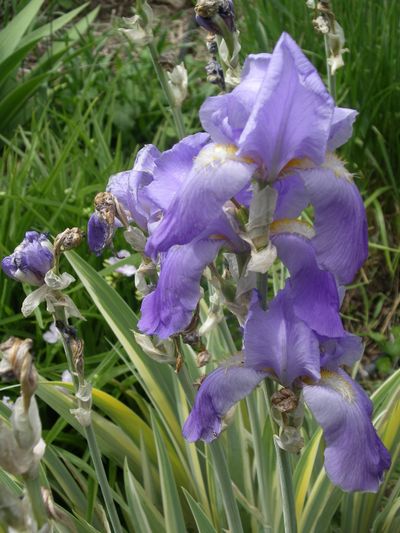Gardening: Irises popular for their versatility in the garden

The irises were exceptional a few weeks ago. Their bold flowers added a great dynamic element to the garden.
Irises have long been a popular garden plant because of their versatility and range of colors. They were an important part of classic Greek culture and mythology. The classic French fleur-de-lis is thought to be a stylized iris. Iris roots were easy to carry from place to place and traveled far and wide with settlers across a number of continents. The native Rocky Mountain iris grows in moist areas throughout our region.
Bearded irises are the most popular and widely planted variety. The term “beard” refers to hairs that stand up on the top of the three drooping petallike sepals or “falls” that hang from the base of the flower. The bearded iris comes in a surprising range of sizes from 3- to 4-foot-tall plants to 6- to 8-inch dwarfs. The taller varieties are perfect for the back of borders while the smaller varieties add spiky interest to the middle and front of plantings.
Bearded iris and its cousin the beardless iris grow from a fleshy root called a rhizome. The rhizome grows right at the surface of the ground and actually projects a little above it. The straplike leaves grow from one end of the rhizome. Each year the plant grows a new root and the clump slowly expands, becoming quite large over time. They will grow in a wide range of soil conditions and fertility levels. Once established, they are fairly drought-tolerant, which makes them perfect for the back of a border where the sprinkler might not reach. They are hardy as well as deer- and pest-resistant.
Irises need about two months of rest after blooming before they can be divided in late July through late August. This allows them time to store up reserves for next year. Clumps usually need dividing every four or five years to keep them blooming profusely.
To divide a clump, work it out of the ground with a spading fork or shovel, being careful not to break too many of the large rhizomes. Divide it, keeping the largest roots from the outside of the clump. Cut the foliage back by two-thirds.
Irises need to be planted just below the surface of the soil to do well. Dig a hole 6 inches deep and twice as wide as the rhizome is long. Mound up a hill of soil in the middle of the hole and set the rhizome on it so that the top is at or slightly above the soil surface. Spread the smaller roots out and down a little in the hole before backfilling the dirt. The top of the rhizome should be at the soil surface.
If you can’t get irises from a friend, they are usually available in the garden centers and catalogs by early August. Look for firm, white roots with no nicks or dings. They should not look dried out. There should be a healthy set of smaller roots coming off the main rhizome.